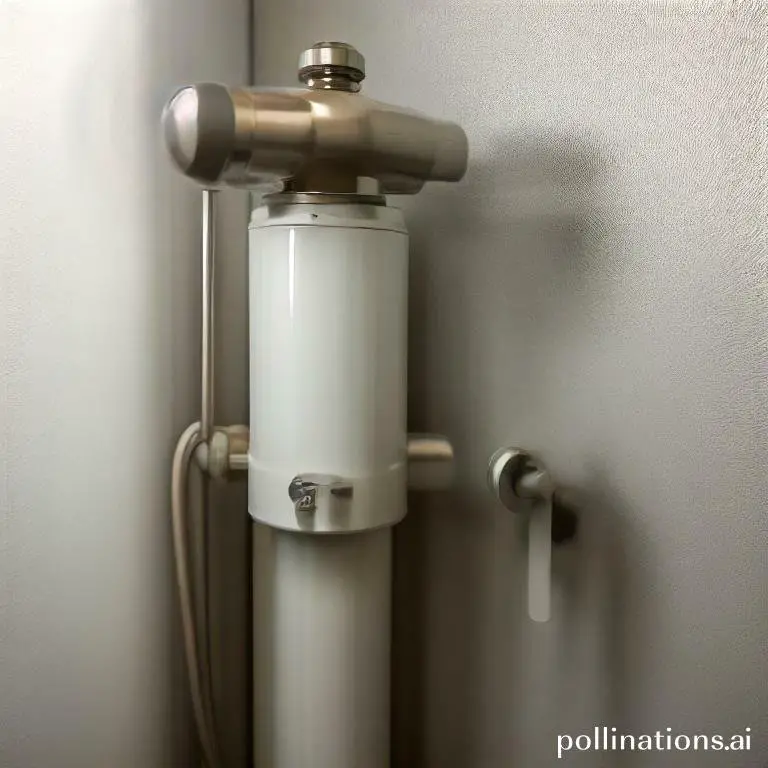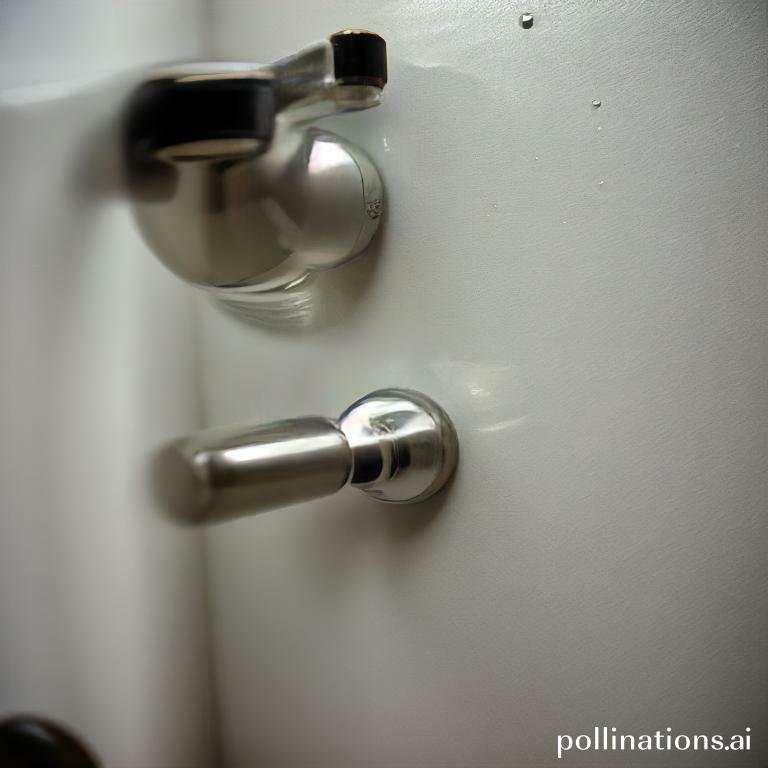
II. The recommended temperature range for energy-efficient appliances is between 120-140 degrees Fahrenheit.
III. Adjusting the water heater temperature can also reduce the risk of scalding and increase the lifespan of the appliance.
In order to save energy and reduce utility costs, adjusting the water heater temperature is a crucial step. By lowering the temperature, you can prevent excessive energy consumption and still enjoy hot water for your daily needs.
This simple adjustment not only contributes to a more sustainable lifestyle but also helps to extend the lifespan of your water heater. With energy-efficient appliances becoming increasingly popular, adjusting the water heater temperature is a small change that can make a big difference in both your wallet and the environment.
Mastering Water Heater Temperature
1. What is the ideal water heater temperature?
Setting the ideal water heater temperature is crucial for both energy efficiency and safety. The recommended temperature is typically between 120°F (49°C) and 140°F (60°C). This range ensures that the water is hot enough for your daily needs at the same time minimizing the risk of scalding accidents.
2. How to check your water heater temperature
To check your water heater temperature, follow these simple steps:
- Locate the temperature dial on your water heater.
- Use a thermometer to measure the temperature of the water at the faucet nearest to the heater.
- Adjust the temperature dial accordingly to achieve the desired temperature within the recommended range.
3. The dangers of setting the temperature too high
Setting the water heater temperature too high can pose several risks, including:
- Scalding: If the water temperature is too hot, it can cause severe burns, especially in children and older adults with sensitive skin.
- Energy wastage: Higher temperature settings lead to increased energy consumption, resulting in higher utility bills.
- Mineral buildup: Excessively high temperatures can accelerate mineral buildup in the water heater, reducing its efficiency and lifespan.
- Bacterial growth: Lower temperatures can allow harmful bacteria, such as Legionella, to thrive in the water system, increasing the risk of waterborne diseases.
| Temperature Setting | Water Usage | Benefits |
|---|---|---|
| 120°F (49°C) | Lower | – Reduced risk of scalding – Energy savings |
| 140°F (60°C) | Higher | – Faster hot water recovery – Suitable for dishwashers and laundry |
Steps to Adjust Water Heater Temperature
Adjusting the water heater temperature is a simple process that can help ensure your comfort and safety. By observing these easy steps, you can customize the temperature to meet your needs:
1. Turn off the power supply
Prior to making any adjustments, it is crucial to turn off the power supply to the water heater. This will prevent any potential accidents and ensure your safety.
2. Locate the temperature dial
Next, you need to find the temperature dial on your water heater. This dial is typically located on the front of the unit and is labeled with temperature settings.
3. Adjust the temperature
Once you have located the temperature dial, use caution and turn it to your desired temperature. It is essential to be mindful of the recommended temperature range to prevent scalding or inadequate hot water supply.
4. Turn the power supply back on
After you have adjusted the temperature, it’s time to turn the power supply back on. This will allow the water heater to start heating the water to the newly set temperature.
Benefits of Adjusting Water Heater Temperature
Adjusting the temperature of your water heater can have several benefits for both your wallet and the environment. By making a few simple adjustments, you can enjoy lower energy bills, increased efficiency, and a longer lifespan for your water heater.
Lower Energy Bills
One of the main advantages of adjusting your water heater temperature is the potential for lower energy bills. By reducing the temperature by just a few degrees, you can save a significant amount of money on your monthly energy expenses. This is because heating water accounts for a large portion of your overall energy usage, and by lowering the temperature, you can reduce the amount of energy needed to heat the water.
Increased Efficiency
Another benefit of adjusting your water heater temperature is increased efficiency. When your water heater is set at a higher temperature, it may be working harder than necessary to heat the water to that level. By lowering the temperature, you can ensure that your water heater is operating at its optimal efficiency, which can help to extend its lifespan and reduce the likelihood of breakdowns or malfunctions.
Longer Lifespan for Your Water Heater
Speaking of lifespan, adjusting the temperature of your water heater can also help to prolong its life. When the temperature is set too high, it can cause excess wear and tear on the various components of the water heater, leading to a shorter lifespan. By lowering the temperature, you can reduce the stress on these components, allowing your water heater to operate more efficiently and last longer.

Precautions to Take When Adjusting Water Heater Temperature
1. Wear protective gear
When adjusting the temperature of your water heater, essential to prioritize your safety. Before starting the process, make sure to wear appropriate protective gear, such as gloves and safety glasses. This will help protect you from any potential accidents or burns.
2. Avoid setting the temperature too high
At the same time it may be tempting to increase the temperature of your water heater for a hotter shower or faster hot water, it is crucial to avoid setting it too high. High temperatures can not only increase the risk of burns but also lead to scalding accidents, especially for children or elderly individuals. It is recommended to keep the temperature at a safe and comfortable level.
3. Check for leaks after adjusting the temperature
After making any adjustments to the water heater temperature, it is essential to check for any leaks. A sudden change in temperature or pressure can sometimes cause fittings or pipes to develop leaks. Carefully inspect the area around the water heater and ensure that everything is dry and secure. If you notice any leaks, fundamental to address them promptly to prevent further damage or water wastage.
| Precautions | Description |
|---|---|
| 1. Wear protective gear | Protect yourself from accidents or burns by wearing gloves and safety glasses. |
| 2. Avoid setting the temperature too high | Keep the temperature at a safe level to avoid scalding accidents. |
| 3. Check for leaks after adjusting the temperature | Inspect the area for any leaks that might have occurred due to the adjustment. |

Other Ways to Save Energy with Your Water Heater
As for conserving energy and reducing your utility bills, there are several ways you can optimize the efficiency of your water heater. In this section, we will ponder some additional methods to help you save energy and lower your environmental impact.
1. Insulate your water heater
Insulating your water heater can significantly improve its efficiency and reduce heat loss. By adding an insulating blanket or jacket to your water heater, you can minimize standby heat loss and retain the heat within the tank. This simple and cost-effective solution can help you save energy and reduce your overall water heating costs.
2. Install low-flow showerheads
One of the biggest culprits of water and energy waste is excessive water flow during showers. By installing low-flow showerheads, you can reduce the amount of hot water consumed meanwhile still enjoying a satisfying shower experience. These showerheads are designed to maintain a steady water pressure in the course of using less water, helping you conserve energy and minimize your water heating expenses.
3. Fix leaks
Even minor leaks in your water heater can lead to significant energy wastage over time. It is essential to regularly inspect your water heater for any leaks and promptly fix them. By approaching leaks promptly, you can prevent unnecessary water and energy loss, ensuring that your water heater operates efficiently and effectively.
To provide a comprehensive overview, here is a table summarizing the potential energy savings from implementing these energy-saving measures:
| Energy-Saving Measure | Potential Energy Savings |
|---|---|
| Insulating your water heater | Up to 9% reduction in energy consumption |
| Installing low-flow showerheads | Up to 40% reduction in water usage |
| Fixing leaks | Prevents energy and water wastage |
Bottom Line
Adjusting the temperature of your water heater can significantly reduce your energy bills and help you save money in the long run. By lowering the temperature to 120°F, you can prevent scalding and reduce the risk of bacterial growth in your water tank. Additionally, investing in energy-efficient appliances can further reduce your energy consumption and help you save money on your utility bills. It’s important to regularly maintain your water heater and check for leaks or other issues that may affect its efficiency. By taking these simple steps, you can enjoy hot water at the same time also reducing your carbon footprint and contributing to a more sustainable future.
Remember, small changes can make a big difference pertaining to energy efficiency. By adjusting your water heater temperature and investing in energy-efficient appliances, you can save money and reduce your impact on the environment. So why not take the first step today and start making a positive change for yourself and the planet?
Read More:
1. Troubleshooting Water Heater Temperature Sensor Drift
2. Setting Water Heater Temperature For Water Heater Flushing














